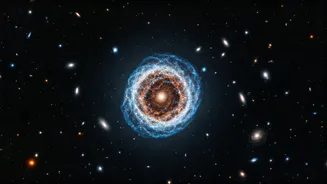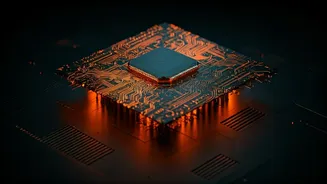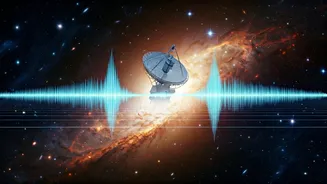What are They?
In the realm of quantum field theory, the concept of virtual particles emerges as a cornerstone, acting as intermediaries in the interactions of fundamental
particles. Unlike their 'real' counterparts that can be directly observed and measured, virtual particles are not directly detectable. Instead, they exist as fleeting mathematical entities. They pop into existence, briefly interact, and then vanish – all within the constraints of Heisenberg's uncertainty principle, which allows for temporary violations of energy conservation. These particles mediate forces, like the electromagnetic force where photons (virtual particles) are exchanged between charged particles, determining how they attract or repel each other. This abstract concept is a crucial framework for understanding how the universe operates at its core, allowing physicists to make calculations and predictions about particle interactions and the forces that govern them.
Feynman Diagrams' Role
Feynman diagrams offer a visual and intuitive way to understand the complex interactions mediated by virtual particles. These diagrams, developed by physicist Richard Feynman, use lines and vertices to represent particles and their interactions, simplifying intricate quantum processes. Each line symbolizes a particle, and where lines meet signifies an interaction or the exchange of a virtual particle. These diagrams are not literal depictions of what happens in space-time but are valuable tools for calculating the probability of certain outcomes. By using these diagrams, physicists can account for all possible interactions involving virtual particles, calculating the likelihood of specific particle behavior. Furthermore, these diagrams facilitate the application of mathematical rules, which ultimately lead to precise predictions about experimental results and deepen our understanding of quantum phenomena, even though the underlying processes involve virtual particles that cannot be directly observed.
Energy-Time Uncertainty
The existence of virtual particles is profoundly linked to the energy-time uncertainty principle, a fundamental concept in quantum mechanics. This principle asserts that there's an inherent limit to how precisely we can know both the energy of a system and the duration of an event. This allows for brief, temporary violations of energy conservation. Consequently, virtual particles can 'borrow' energy to exist briefly before returning it, always adhering to the constraints of the uncertainty principle. The shorter the existence of a virtual particle, the larger the potential energy 'borrowed,' which is why we cannot directly observe them. This temporary lending and returning of energy is crucial for how forces like electromagnetism work, since it provides a mechanism by which force-carrying particles can mediate interactions between other particles. The uncertainty principle is not merely a theoretical construct; it is a core element, enabling the virtual particle phenomena to occur within the framework of quantum field theory.
Effects on Reality
Virtual particles, despite their elusive nature, have considerable and measurable effects on physical phenomena. A striking example is the Casimir effect, which demonstrates the force between two uncharged conducting plates in a vacuum. The presence of virtual particles within the space between the plates creates a pressure imbalance, resulting in a measurable attraction between them. Furthermore, virtual particles influence the behavior of real particles and can modify fundamental properties. For instance, the vacuum of space isn't truly empty; it constantly teems with virtual particles, which slightly alter the properties of particles like electrons. These alterations are confirmed by experiments, providing strong evidence for the existence of virtual particles and their impact on the observable world. Thus, even though they are fleeting, virtual particles have a measurable role in shaping the very nature of reality and influence the properties of matter and forces.
Virtual Particles & Beyond
The implications of virtual particles extend into cosmology, particularly in relation to dark energy and dark matter. Although not fully understood, these entities are theorized to play a role in driving the accelerated expansion of the universe. The constant creation and annihilation of virtual particles could contribute to the energy density of the vacuum. This vacuum energy is a potential source of dark energy, which opposes gravity. Moreover, some theories posit that virtual particles could interact with dark matter, providing insights into its nature and behavior. While these connections are areas of active research, the role of virtual particles in understanding dark energy and matter represents a critical frontier in modern physics. Further research into this area might unlock some of the greatest mysteries of our universe.












